I said more than a month ago that I would post more photos and write more of my explorations with Carlos (my husband) around Cyprus. Lately we have acquired the habit of wandering out of town most weekends to walk and have fun – because our eyes are getting rectangular from staring at the computer screen for so long during the week.
One of our favorite places is the west – Limassol and Paphos district. Many archaeological sites lie that way – famed cities that have sunk into the ground. That way lies Kourion (Curium) the famous Roman city that was destroyed by a strong earthquake in 365 AD, and Palaepaphos (nowadays called Kouklia), where the sanctuary to Afrodite used to stand, renowned for sacred prostitution rites, dedicated to a goddess that has many names and attributes and who was adored there since the murky depths of time.
Along the jagged coastline of Kato Paphos (Lower Paphos), white cliffs jut into the blue sea.
Sometimes they are carved by the waves into weird shapes
Naturally formed caves were often carved out more and used as tombs since the ancient times. Hellenistic tombs were reused by the Romans, then as chapels by the early Christians who cut their names and crosses into the soft sandstone rock.
On top of the cliff, above the caves, was a Roman town (with a later Byzantine church), while below is a natural harbor. Across, is a tiny island, and on it a Roman Garrison was posted to protect it.
An ancient road runs alongside the sea, from Paphos to the Roman town over the cliffs – obviously an important western outpost. The whole area is riddled with tombs and ruins.
It was a lovely walk. Plus it’s springtime, as you can see. Walking from ruin to ruin, from cave to cave, from field to field, I felt as if time had turned back to long ago, when we human were still few and trying to mark our presence on the face of the earth.
Happy Friday to all! 🙂

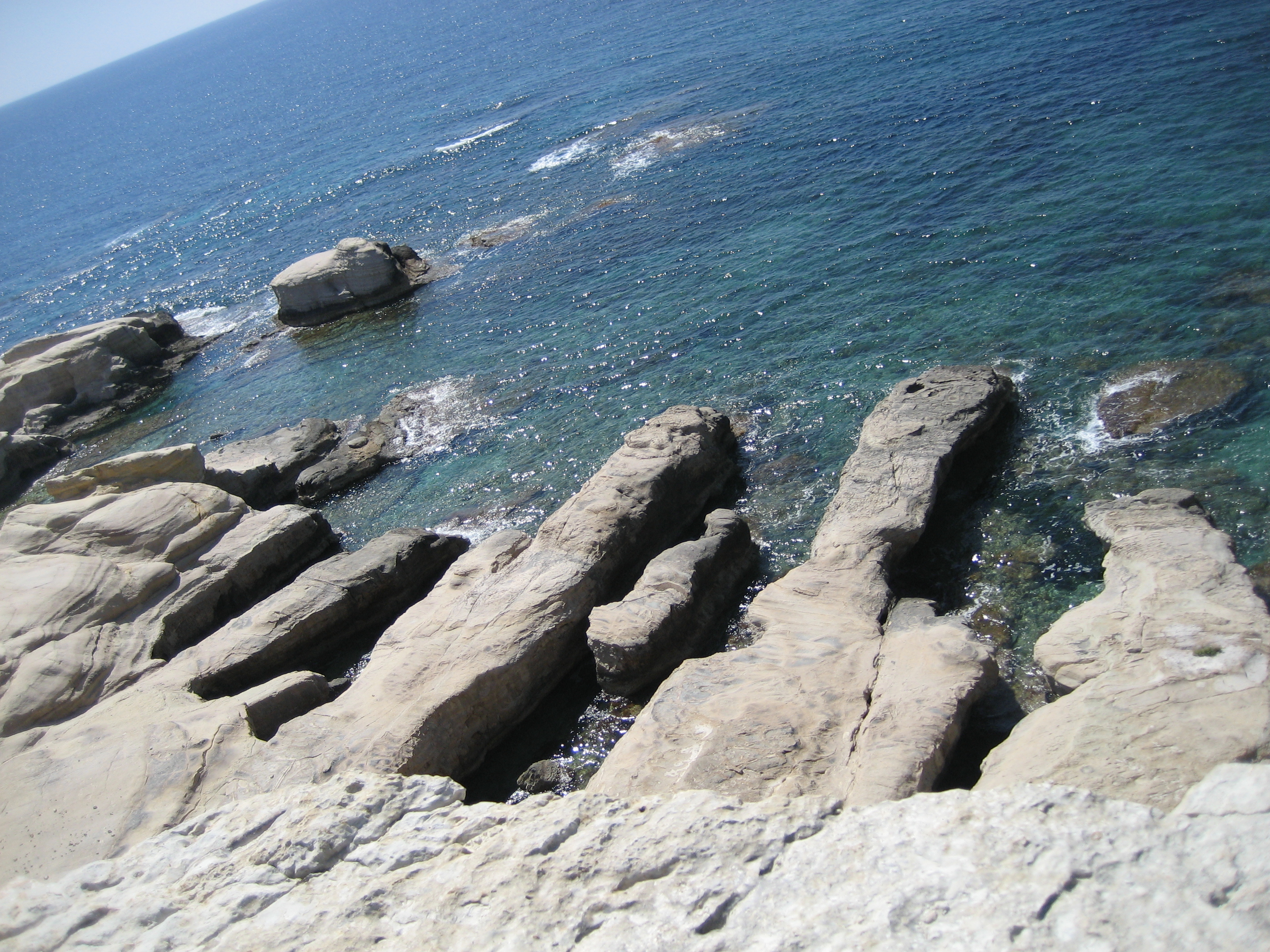
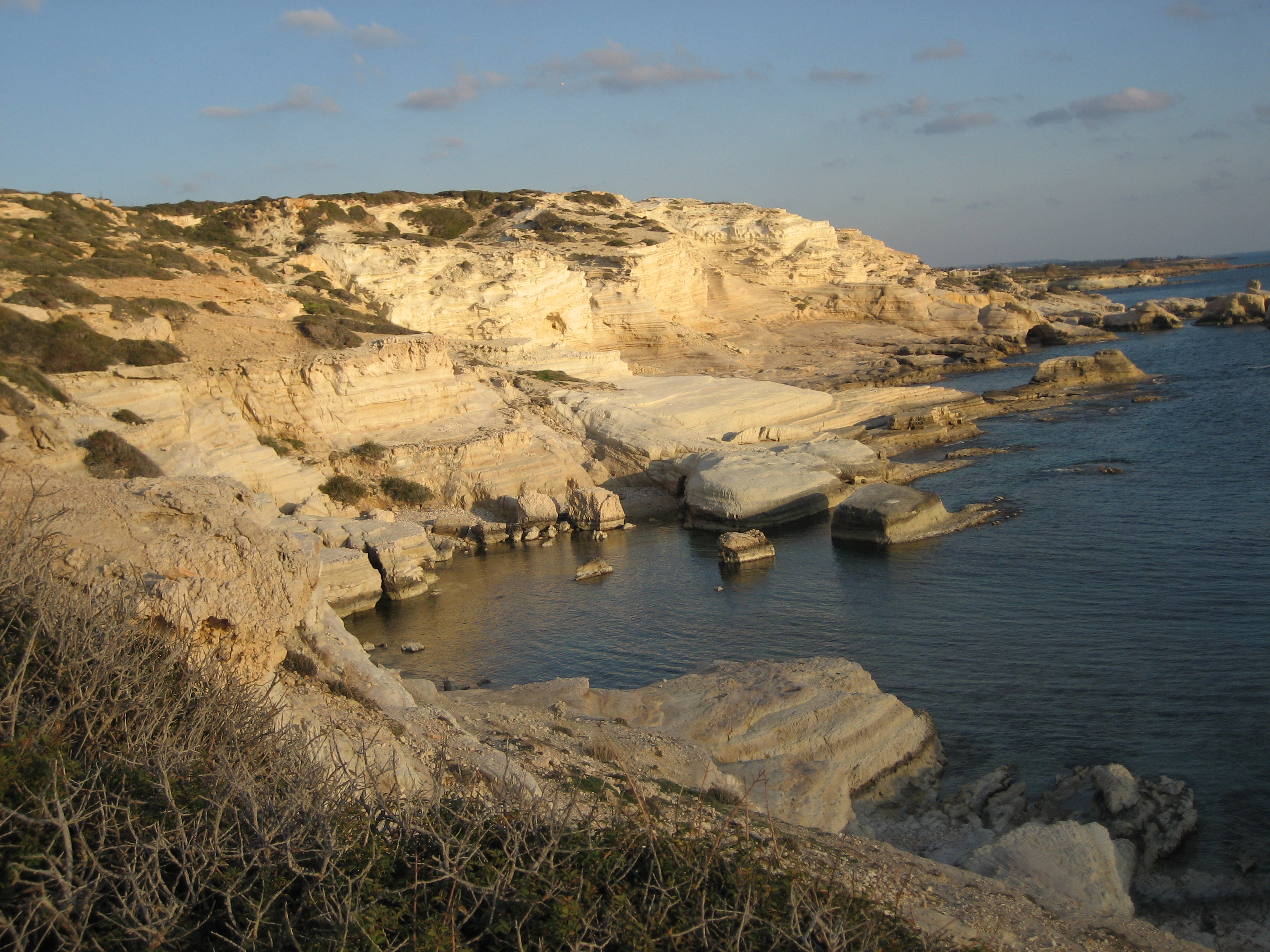
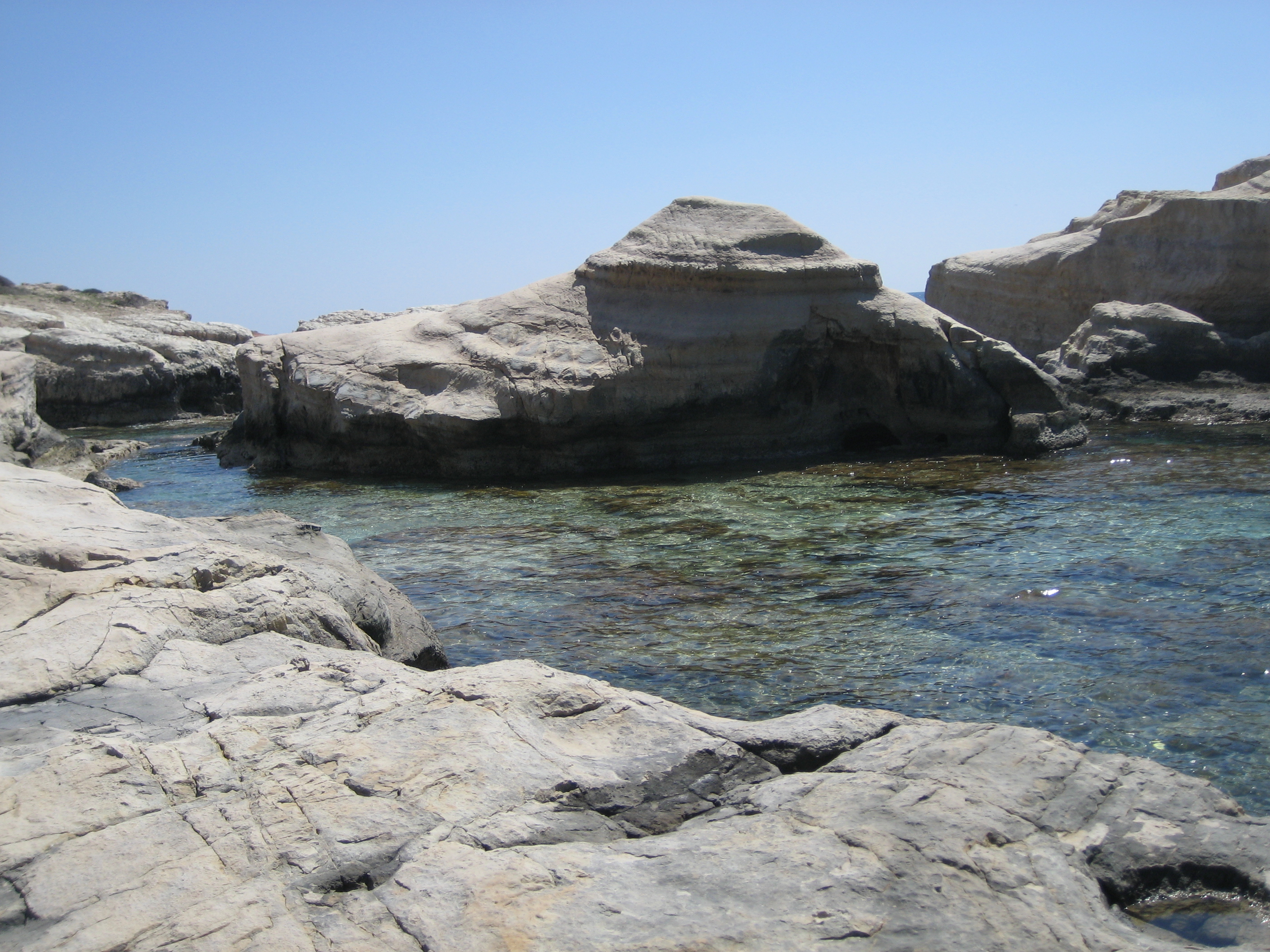
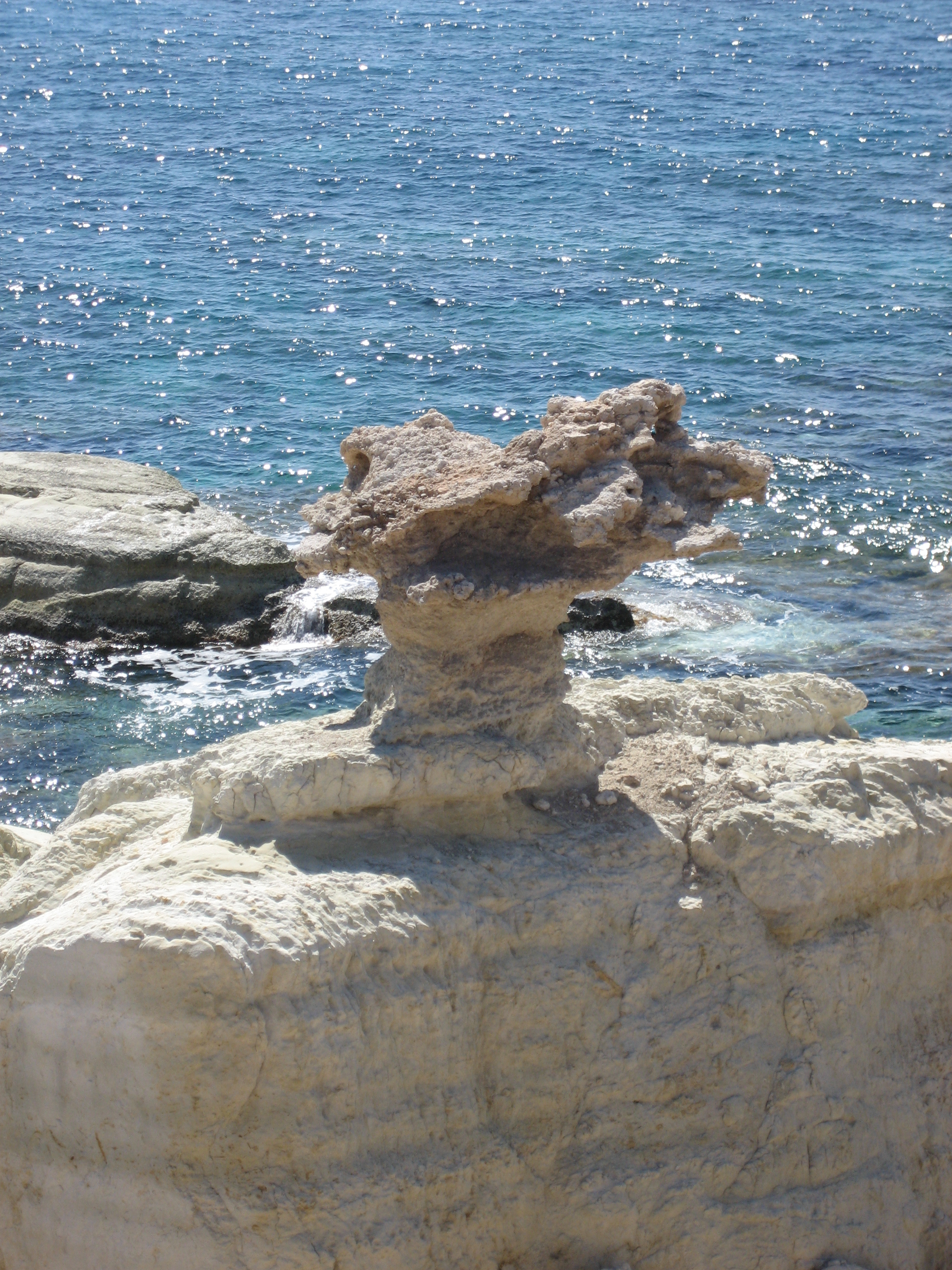
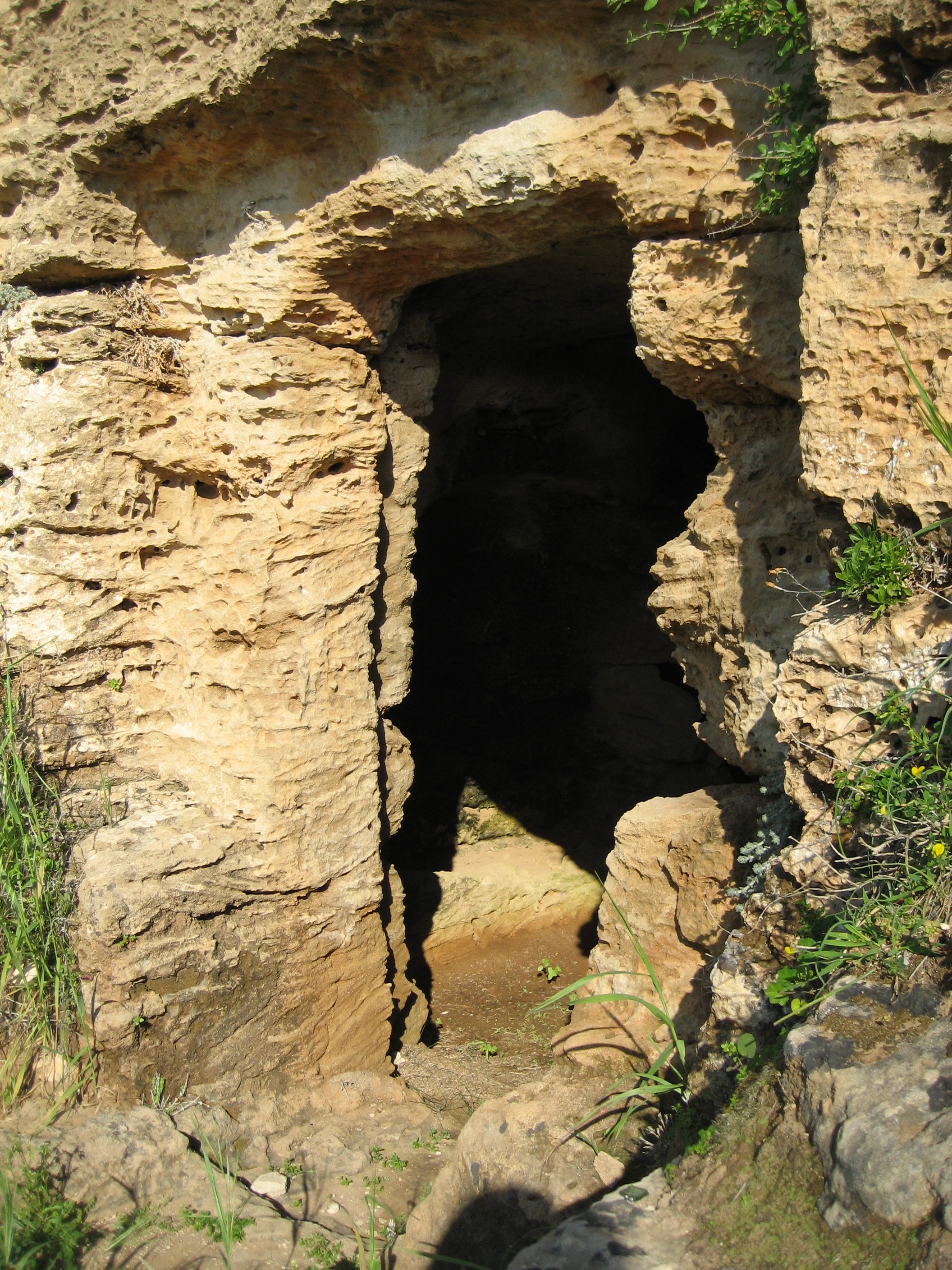
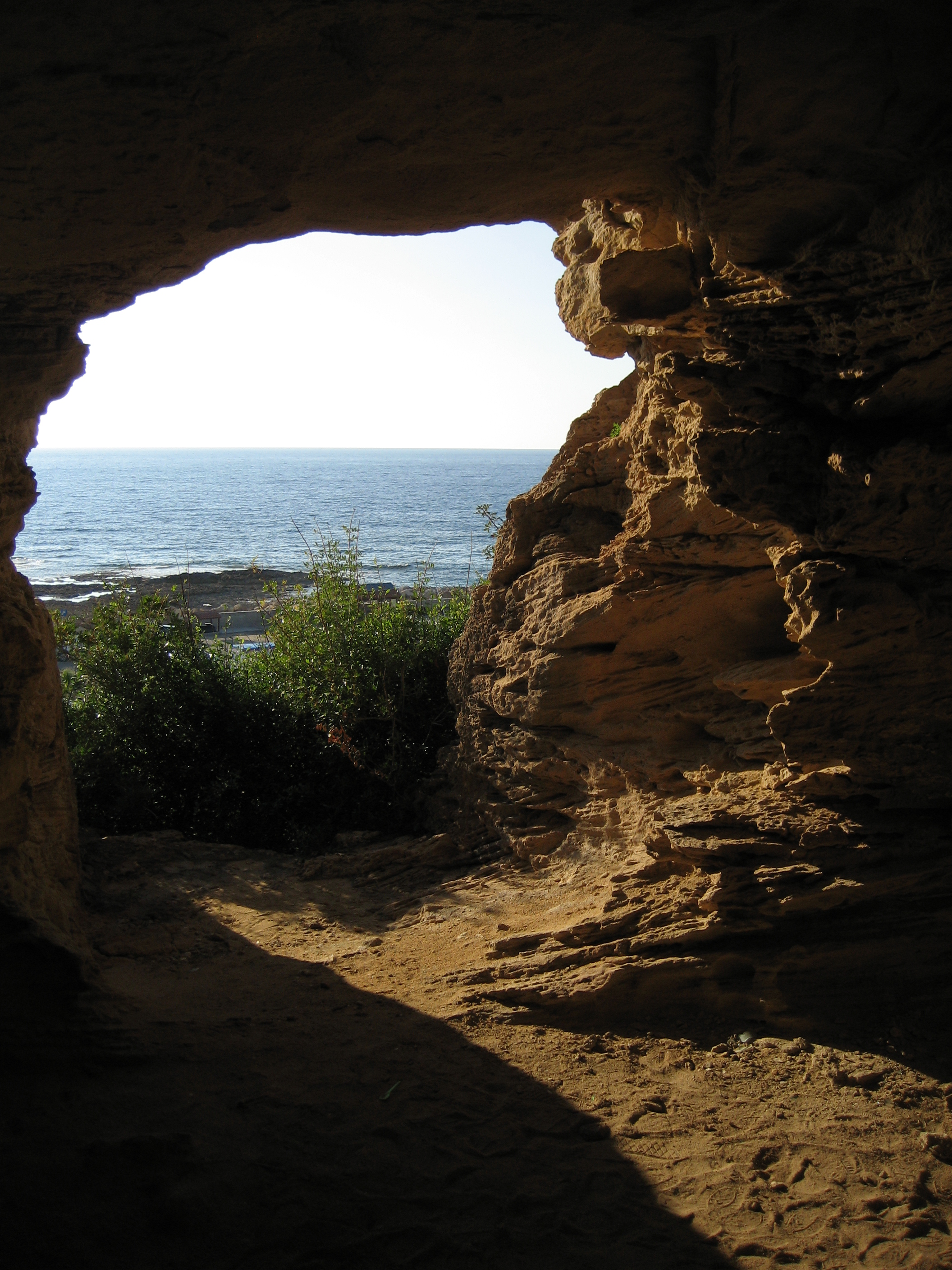

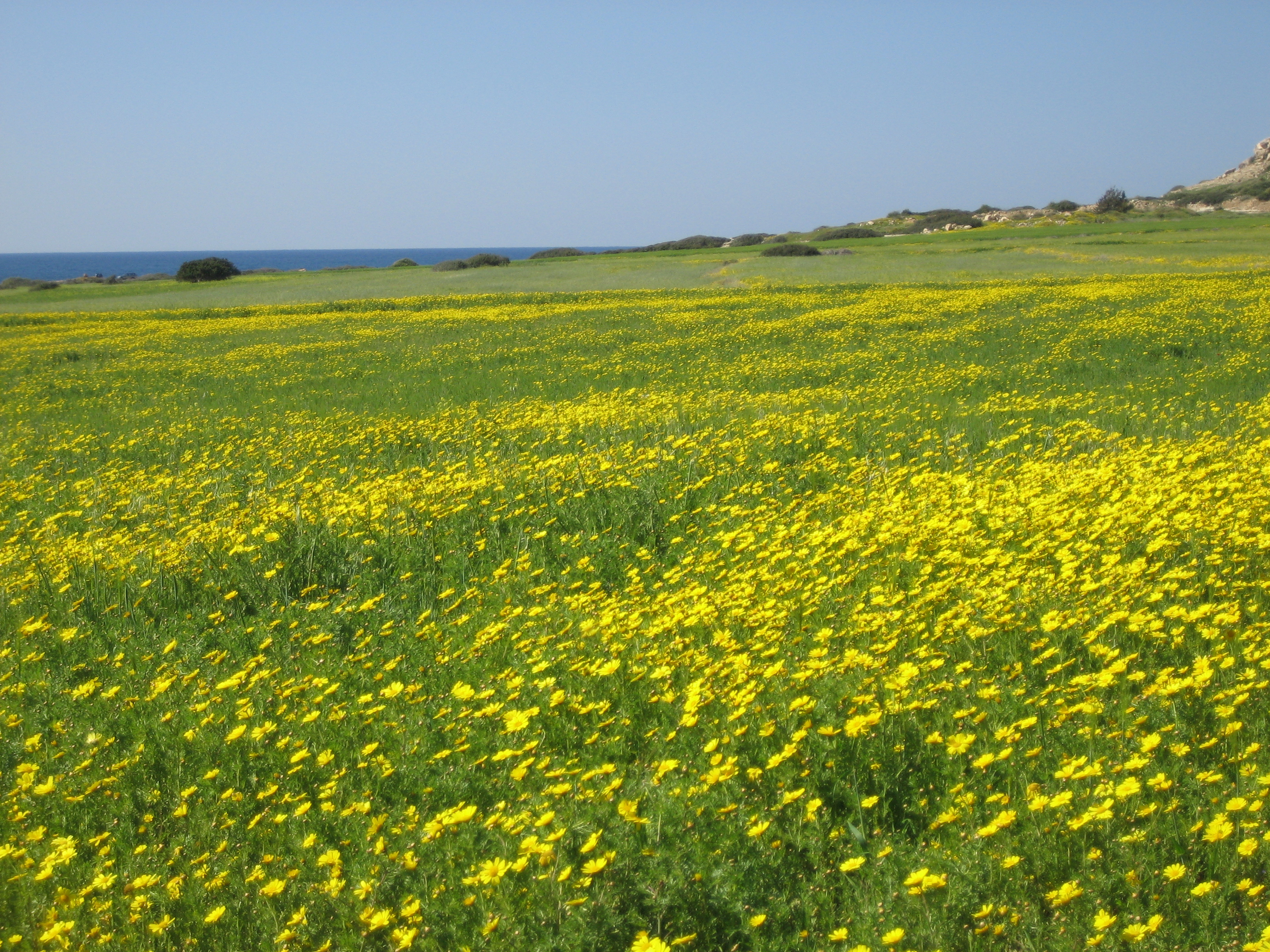
*sighs*
wow. so lovely.
I really like it. It resonates. I want to read the whole story!